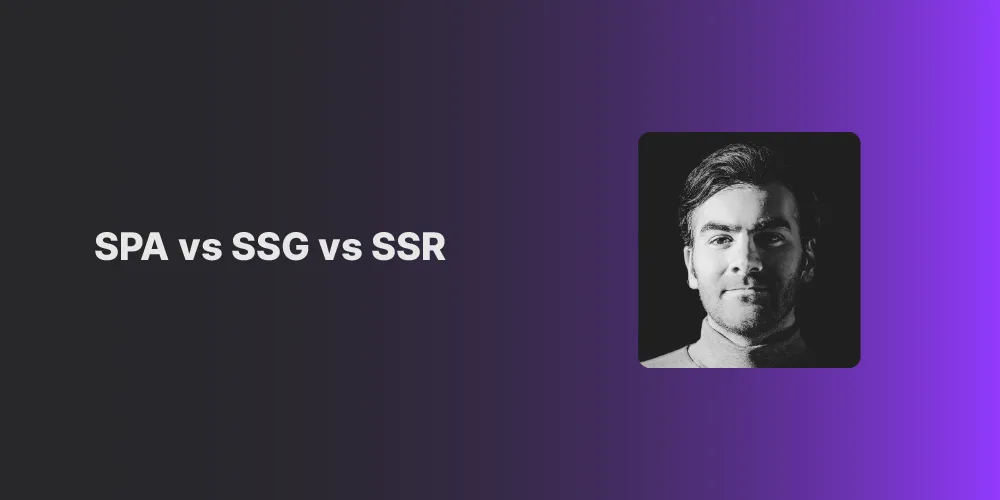
Exploring the Differences: SPA, SSG, and SSR in Web Development
In the world of web development, there are various architectural approaches to building websites. Three popular methods include Single-Page Applications (SPA), Static Site Generators (SSG), and Server-Side Rendering (SSR).
Kian Salout
In the world of web development, there are various architectural approaches to building websites. Three popular methods include Single-Page Applications (SPA), Static Site Generators (SSG), and Server-Side Rendering (SSR). Understanding the differences between these approaches is crucial for choosing the right one for your project. In this blog post, we will dive into the unique characteristics, benefits, and considerations of each approach.
Single-Page Applications (SPA):
SPA is a modern web development approach that allows for dynamic user experiences within a single web page. Here are some key features and considerations of SPAs:
- Dynamic content updates without full page reloads
- Enhanced interactivity and responsiveness
- Utilizes JavaScript frameworks like React, Angular, or Vue.js
- Requires initial loading of JavaScript and heavier client-side rendering
- Great for highly interactive applications like social media platforms or web-based tools
Static Site Generators (SSG):
SSGs have gained popularity due to their simplicity and efficiency. Key aspects of SSGs include:
- Generates static HTML, CSS, and JavaScript files during the build process
- No server-side processing required during runtime
- Ideal for content-heavy websites with less dynamic functionality
- Fast loading times and improved performance
- Popular SSGs include Gatsby, Next.js, and Jekyll
Server-Side Rendering (SSR):
SSR is a traditional approach that generates web pages dynamically on the server. Here are some notable features of SSR:
- Web pages are fully rendered on the server before being sent to the client
- Suitable for websites requiring frequent content updates
- Allows for better SEO performance and social media sharing
- Can be slower for initial page loads compared to SPAs
- Frameworks like Next.js and Nuxt.js facilitate SSR implementation
Choosing the Right Approach:
Each approach has its strengths and considerations. Here are some factors to consider when selecting the most suitable approach for your project:
- User interactivity and real-time updates: SPAs excel in providing a dynamic user experience.
- Content-focused and performance: SSGs offer fast loading times and optimal performance for content-heavy sites.
- SEO and social media sharing: SSR ensures search engine visibility and proper content sharing on social platforms.
- Development complexity and time: SPAs can be more complex, while SSGs and SSR may have a steeper learning curve initially.
Understanding the differences between SPA, SSG, and SSR allows you to make informed decisions when choosing the right web development approach for your project. Consider the specific requirements, content type, interactivity needs, and performance expectations. Whether you opt for a highly interactive SPA, a content-focused SSG, or an SEO-friendly SSR, each approach has its advantages and considerations. Stay updated with the latest trends and weigh the pros and cons to build remarkable web experiences.
If you need assistance in finding the right solution, feel free to get in touch.